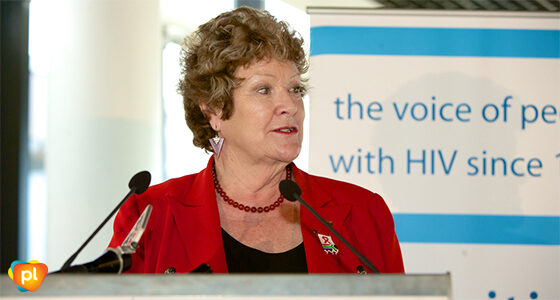
In the second of a series of personal reflections on what was arguably the most ambitious strategy produced in the thirty years of the Australian HIV response, Geoff Honnor examines the background to and the challenges posed by the ‘Treat Early’ part of the ‘Ending HIV’ equation Test Often + Treat Early + Stay Safe = Ending HIV by 2020.
In December 2012, the NSW Health Minister, Jillian Skinner, launched the ‘NSW HIV Strategy 2012-15: A New Era’. It was an era envisaged as providing the means to deliver a virtual end to HIV transmission in NSW by 2020.
The Strategy made the ‘Treat Early’ case precisely and dispassionately:
‘Recent studies have found that combination anti-retroviral (ARV) treatment can help prevent the transmission of HIV as well as improve the health and life expectancy of people with HIV. Mathematical modelling has suggested that universal voluntary HIV testing of those at risk of HIV combined with immediate access to ARV treatment is an effective strategy for reducing HIV transmission.
‘Gaining the optimal benefit in NSW relies on early detection of HIV through increased voluntary testing, early provision and uptake of ARV treatment for people who test positive, and support for treatment adherence to achieve undetectable viral load (UVL).
The ‘Treatment Cascade’ analysis provided in the Strategy document suggested that, in 2012 between 12,500 and 15,000 people were living with HIV in NSW, around 10,000 of whom (70%-80%) were diagnosed and around 5,500-6,000 (60-70%) on treatment, most with UVLs. The strategic case for encouraging early engagement with treatment emerges clearly.
The strategic case was one thing. The community and sector response however, was quite another. The concept of early treatment drew a reaction that was anything but dispassionate, from a wide range of stakeholders, not least HIV positive people ourselves.
The advent of effective HIV combination therapy in 1996 had dramatically altered living with HIV for those of us fortunate enough to be living in close proximity to developed world health system delivery.
This decoupling of death from diagnosis provided the opportunity for people were living with HIV to reclaim our lives beyond an all-encompassing HIV identity. However, this meant that the Australian body positive had, for the most part, disappeared off into a chronic manageable disease invisibility.
This ‘privatisation’ of the lived experience of HIV had the unintended consequence of leaving attitudes and perceptions locked into the increasingly out-dated treatment picture of the mid- to late 1990’s, where large numbers of pills had been offered in adherence-testing, toxic regimens with a profusion of significant side effects. Given that prevailing historical backdrop, delaying engagement with treatment for as long as possible looked like a good idea.
By 2012 this picture was far removed from the actual modern experience of engagement with HIV treatment. By this time, simpler, far more effective and much better tolerated treatments had far fewer side-effects. Yet in the absence of any widespread discussion of this reality, the legends lingered.
There was also continued clinical uncertainty around the optimum time to commence treatment which the 2009 START study was designed to answer. START, short for ‘Strategic Timing of Antiretroviral Treatment’ was a large international clinical trial which was due to deliver results by December 2016. In the meantime PBS access to HIV ART remained restricted to people with CD4 counts below 500.
Finally, many people were concerned that the advent of treatment as prevention could potentially threaten the health benefit primacy of HIV treatment and/or lead to forced or coercive engagement with treatment. The fact that this concern seemed to flourish in the complete absence of any evidence of either of these courses of action, didn’t seem to lessen anxiety about it.
At this point, let’s fast forward to March 2016 and focus on the release of the 2015 snapshot of progress against the NSW HIV Strategy, specifically the treat early aspect.
In 2012 an estimated 60-70% of people diagnosed with HIV were estimated to be on treatment compared with 92% of people receiving care in public HIV services in NSW in 2015. Furthermore, 82% of people newly diagnosed with HIV in NSW in the first half of 2015 had commenced HIV treatment within six months of diagnosis.
Quite a turnaround. So, how did it occur?
I’d put it down to a number of factors. Firstly, a substantial shift in medical opinion which built throughout 2012 and 2013, led by the Australasian Society for HIV Medicine (ASHM) towards starting treatment earlier. We know that the overwhelming majority of people were living with HIV rely on our HIV prescribers for clinical and broad health-related decision-making so medical support was always going to be crucial.
The removal of the 500 CD4 barrier to PBS access in 2014 after strong advocacy by a number of HIV sector organisations assisted in enabling greater access to treatment. The icing on the cake was the early closure of the START study in 2015, when compelling evidence revealed the benefits of starting treatment immediately and at CD4 cell counts above 500.
However I’d also suggest the innate good sense of people were living with HIV who responded not only to the medical and strategic cases, but also to a rational, evidence-based community and peer-based case for starting earlier. From the case that sprang from the initial and ongoing work by ACON through to the inspired ‘Take Control’ campaign from Positive Life NSW, and the rise of an innovative NSW developed peer based HIV social media network, The Institute of Many (TIM). All emerging at roughly the same time as the NSW HIV Strategy, all fuelled the ‘Treat Early’ arm of the ‘Ending HIV’ equation into motion.
I should own up that back in 2012 I predicted that it would be much harder to achieve this turnaround than it’s proved to be. One should never underestimate the smarts of the Body Positive.







